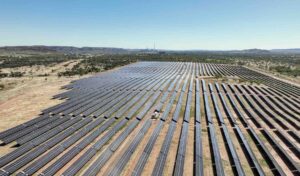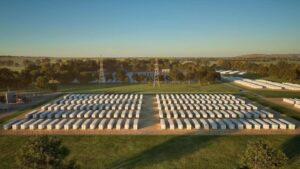Australian gravity storage startup Green Gravity is looking to quickly expand into international markets once its first Australian demonstration plant – inside a former coal mine – is finished.
CEO Mark Swinnerton is exploring the US, India and South Africa as future locations for the company’s gravity energy storage system (GESS) which will use up to 30-tonnes of steel coil lowered into vertical mine shafts.
“I just got back from 10 days in India where we had amazing engagement,” he told RenewEconomy.
The ex-BHP executive has just signed a Memorandum of Understanding (MoU) with global engineering firm GHD which he hopes will open more doors overseas through its industry connections and technical expertise.
“They’ve got a very strong reputation in mining. Every mining company we are negotiating with, when I mention GHD I get a very positive response,” Swinnerton says.
“And they’ve got a very strong energy market modelling capacity and they’ve got experience in grid connection technology.”
Yancoal’s closed Austar mine in NSW is likely location for the first demonstration project, with the two companies doing a pre-feasibility study into how the technology might work in decommissioned ventilation shafts that are 400-500 metres deep.
There are 20 or so other shafts in Australia which are on Green Gravity’s shortlist in places such as Illawarra, the Hunter region, Mt Isa in Queensland, and Tasmania.
The Austar pilot study is due for completion in 2023. But Swinnerton wants to be able to demonstrate the technology that year as well. He says the earliest they would be able to “do anything material offshore” will be 2024.
The US is an attractive market because it’s an enormous energy consumer that is also highly transactable and also has nearly a million legacy mining assets.
India, on the other hand, is interesting for its aspirations for a rapid growth in storage capacity over the rest of the decade. South Africa has “debatably the best deep mining assets in the world” and big aspirations around hydrogen, which will also require good energy storage.
Swinnerton says gravity storage technology has the potential to keep costs low by re-using mining assets and by using gravity as the fuel. There are no costs for land, water and chemicals that other storage technologies need.
The demonstration plant will use excess renewable energy during the day to lift 30 tonne steel coils to the top of a mine shaft. When energy is needed, such as the evening peaks, it lowers those weights to create kinetic energy and spin a regenerative electrical motor.
Green Gravity’s technology is similar to pumped hydro in that it uses gravity to generate power, but as yet it is untested at scale. It’s working with the University of Wollongong and Soto Engineering to develop the concept.
Green Gravity is looking to raise $18 million in venture and grant funding, and is talking to potential corporate partners to get to commercialisation.
And despite the widespread reports of venture funding drying up or technology companies, Swinnerton hasn’t seen anything similar in the clean energy space.
“Clean energy seems preserved at this stage from the issues.”










